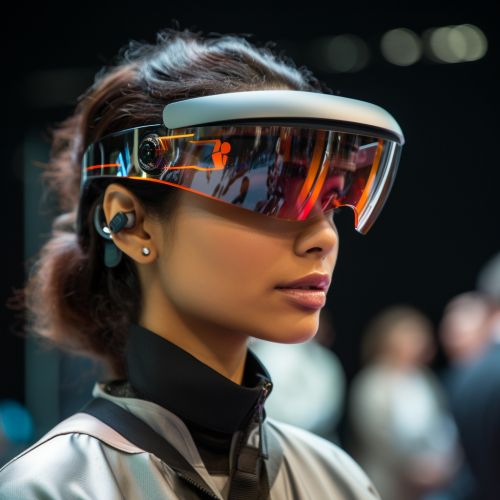Augmented Reality
Introduction
Augmented Reality (AR) is an interactive experience of a real-world environment where the objects that reside in the real world are enhanced by computer-generated perceptual information. This technology alters one's ongoing perception of a real-world environment, as opposed to a virtual reality system that replaces the real world with a simulated one. Augmented Reality is related to two largely synonymous terms: mixed reality and computer-mediated reality.
History
The concept of Augmented Reality is not new. It dates back to the early 20th century, with the development of the "Virtual Fixtures" system at the U.S. Air Force's Armstrong Laboratory in 1992. This system overlaid sensory information onto a workspace to improve human productivity. The term "Augmented Reality" itself was coined by Tom Caudell, a researcher at Boeing in the early 1990s.
Technology
Augmented Reality operates on wearable computer technology. These wearable computers are hands-free devices that provide relevant information to the user through suitable interfaces. They are designed to assist the user in performing daily tasks, without causing any hindrance. The technology involves a range of systems from simple heads-up display (HUD) to fully immersive wearable computers.


Applications
Augmented Reality has a wide range of applications in various fields. It is used in the military, where AR can assist in training soldiers for combat situations or other dangerous settings. An augmented reality system can simulate these situations, allowing soldiers to practice dealing with them safely.
In medicine, AR can be used to assist in surgery by providing the surgeon with information that is otherwise hidden, such as showing the position of a tumor, the exact position of the patient's anatomy, or superimposing a CT scan over the patient's body to aid in precision during surgery.
In entertainment, AR is used to enhance the user's interaction with the real world. Video games and apps are an obvious application, but it can also be used in movies and television.
In education, AR can be used to provide a rich learning environment that enables students to study concepts in three dimensions. It can also provide real-time data during field trips.
Challenges
Despite its potential, Augmented Reality faces several challenges. These include technical issues, such as the difficulty of developing software that can accurately track the user's movements and perspective in real time. There are also social and ethical issues, such as the potential for privacy invasion and the potential for AR to be used in ways that harm or deceive people.
Future
The future of Augmented Reality is promising, with ongoing advancements in technology. As AR devices continue to evolve, they are becoming more lightweight, wearable, and comfortable for everyday use. In the future, AR could become a part of our daily lives, enhancing our interactions with the real world.
